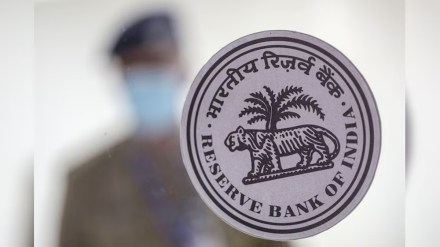The Reserve Bank of India (RBI) has begun its three-day Monetary Policy Committee (MPC) meeting on Tuesday, June 4, and the big expectation is for another 25 bps rate cut. The final policy decision, including the inflation and GDP outlook, will be announced by RBI Governor Sanjay Malhotra on Friday, June 6, at 10 am.
The six-member MPC — comprising RBI Governor Sanjay Malhotra, Deputy Governor M Rajeshwar Rao, Executive Director Rajiv Ranjan, and external members Nagesh Kumar, Saugata Bhattacharya, and Professor Ram Singh — is meeting at a time when inflation is at its lowest in nearly six years, and growth signals remain mixed.
Analysts at Bank of Baroda, CareEdge Ratings, and others expect a 25 basis points rate cut in the upcoming policy, while keeping the accommodative stance unchanged. Here is why:
Bank of Baroda expects a ‘hat-trick’ of rate cuts
Along with a 25 basis points rate cut, Bank of Baroda expects the RBI to revise its inflation forecast for the fiscal year 2025-26 slightly downward by around 10 basis points. “Given the continued moderation in food prices and assuming a normal monsoon along with subdued global commodity prices, the softening trend in inflation is likely to continue,” said Bank of Baroda.
The bank maintains its inflation forecast at around 3.8 to 3.9 per cent for FY26. On the growth front, the GDP forecast remains steady at 6.4 to 6.6 per cent as the RBI watches global trade uncertainties.
Global risks and currency outlook:Bank of Baroda
Global trade tensions, especially between the US and China, continue to pose risks. The US has imposed higher tariffs on imports, and though a temporary truce has been reached, recent accusations threaten renewed trade conflicts. The US Federal Reserve has warned that tariffs could increase inflation and hurt growth. However, cooling inflation in the US raises hopes of rate cuts starting September 2025.
The Indian rupee appreciated by 1.3 per cent since the last policy but weakened again in May. The interplay of US dollar strength, safe-haven demand, and trade tensions will influence the rupee’s movement. Bank of Baroda expects the rupee to trade with a slight depreciating bias between 85 and 86 per US dollar in the near term.
Rate cut likely as inflation eases
Retail inflation eased to 3.2 per cent in April 2025, the lowest since July 2019, marking the third consecutive month it stayed below the RBI’s 4 per cent target. This broad-based disinflation — driven not only by food prices but across multiple consumer segments — has created a favourable backdrop for further monetary easing.
Sankar Chakraborti, MD & CEO of Acuité Ratings & Research, noted that “Unlike previous disinflation episodes primarily driven by volatile food prices, the current moderation is broad-based across multiple segments of the consumer basket. This widespread easing bolsters confidence that inflation expectations are well anchored, allowing the RBI to focus on growth support without risking price stability.” However, he flagged that despite India retaining the tag of the world’s fastest-growing major economy, its full-year FY25 GDP growth slowed to 6.5 per cent — the weakest in four years — with risks emerging from subdued manufacturing, sluggish rural consumption, and weak global demand.
“While the 7.4 per cent GDP growth recorded in the fourth quarter is strong, it contributed to a full-year expansion of just 6.5 per cent, the slowest pace in four years, prompting some caution among policymakers,” he added.
CareEdge Ratings expects more easing
CareEdge Ratings stated that the RBI has already delivered effective easing worth around 75 basis points since February 2025, even though the official repo rate cut totals only 50 basis points. This was achieved through aggressive liquidity support.
The agency expects another 25 basis points rate cut in June and predicts a total 50 basis points reduction through FY26.
“With inflation under control and growth still recovering, the RBI has space to continue easing. However, risks remain — including slow private investment, patchy rural demand, and uneven industrial activity,” the agency said in a note.
Q4 GDP Strong but Annual Growth Shows Moderation:BoB
While Q4 FY25 GDP growth came in strong at 7.4 per cent, annual growth of 6.5 per cent reflects moderation from the previous year. Services and construction sectors remain resilient, but manufacturing growth has been subdued. Rural demand also continues to trail urban consumption.
High-frequency indicators such as GST collections, vehicle registrations, and air passenger traffic have shown improvement, but purchasing managers’ indices (PMIs) for manufacturing and services have indicated slight moderation, likely due to rising global trade frictions.
Modest Transmission of Rate Cuts to Banking Sector: Bank of Baroda
Bank of Baroda highlights that the transmission of rate cuts to the banking system has been modest so far. Public sector banks have seen greater reductions in lending and deposit rates compared to private sector banks. Bank credit growth has slowed in the April–May period, particularly in the personal loans and services segments, while deposit growth also eased.
The June 6 policy outcome will provide critical insights into the RBI’s roadmap for FY26, especially amid rising uncertainty in the global trade environment and the approaching US tariff deadline on July 9.
